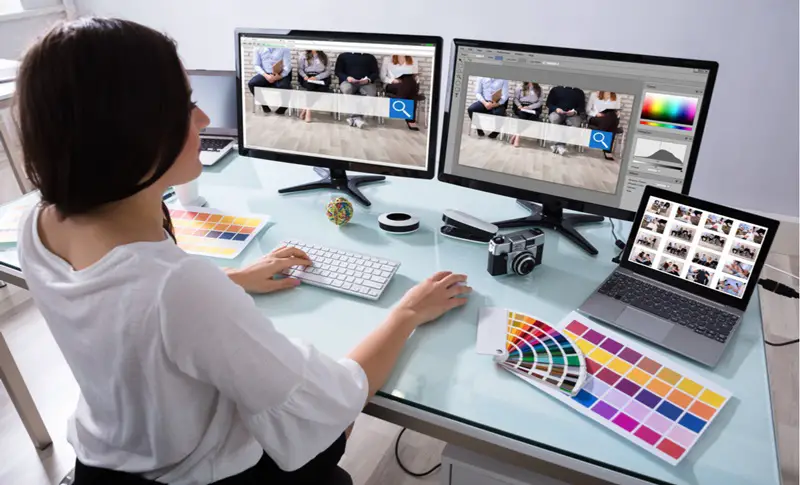In the realm of design, your computer is not just a tool; it’s your creative partner. To thrive in this digitally driven environment, designers must optimize their computing practices. Whether you’re a novice embarking on your design journey or a seasoned professional aiming to refine your process, these eight computer tips are designed to elevate your design game.

1. Select a Design-centric Computer
Your choice of computer can significantly influence your design capabilities. Opt for a machine tailored to design needs—high processing power, ample RAM, and superior graphics capabilities are non-negotiable for software-intensive tasks. While laptops offer mobility, desktops can provide ergonomic benefits and larger screen real estate, essential for detailed work.
2. Equip Yourself with Cutting-edge Tools
Investing in the right tools can dramatically transform your design process. Key gadgets to consider include:
- Graphics Tablets: For natural, hand-drawn designs.
- Smartpens: Perfect for digitizing notes and sketches.
- Monitor Calibrators: To ensure color accuracy across devices.
- Ergonomic Mice: Reduce strain during long design sessions.
Staying abreast of the latest tech can provide you with a competitive edge.
3. Harness the Power of Advanced Software
Leverage the latest design software to streamline your workflow and unlock new creative potentials. From vector graphics editors to CAD for 3D modeling, the right software can facilitate the creation of sophisticated designs. Ensure your toolkit is always up-to-date to make the most of new features and improvements.
4. Prioritize Cybersecurity
In the digital age, protecting your intellectual property and personal data is paramount. Implement robust cybersecurity measures:
- Complex Passwords: Enhance account security.
- Antivirus Software: Protect against malware.
- Firewalls and VPNs: Safeguard your internet connection.
- File Encryption: Secure sensitive data.
5. Master Keyboard Shortcuts
Keyboard shortcuts can shave seconds off nearly every action you take, cumulatively saving hours over the course of a project. Each design program has its own set of shortcuts; mastering these can significantly speed up your design process.
Read also: Keyboard Finger Position Guide – Master Efficient Typing
6. Keep Your Files Meticulously Organized
An efficient filing system allows for quick access to projects and assets, reducing time spent searching for files. Use descriptive naming conventions and organized folder structures to keep everything in check. Consider cloud storage for accessibility and backup.
7. Stay Updated and Keep Learning
The design world evolves rapidly. Dedicate time to learning new skills, exploring emerging trends, and getting acquainted with the latest design methodologies. Online courses, tutorials, and webinars can be invaluable resources for continuous learning.
8. Optimize Your Computer’s Performance
Regular maintenance of your computer can prevent slowdowns and crashes that interrupt your workflow. Keep your operating system and software updated, declutter your desktop, and conduct periodic hardware upgrades to keep your machine running smoothly.
Read also: Top 5 Benefits of Outsourcing Graphic Design Projects
Conclusion
Implementing these tips can significantly enhance your efficiency, creativity, and output quality. Remember, the goal is to make your computer a seamless extension of your creative vision, enabling you to bring your most ambitious design concepts to life.
[Image credit: Google Images]
